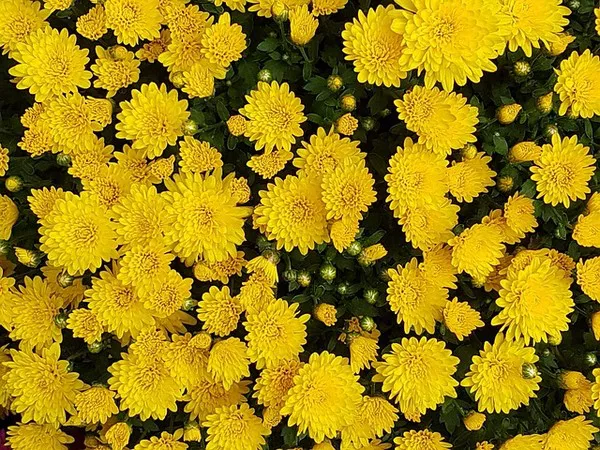Chrysanthemums, often referred to as “mums,” are cherished for their vibrant colors, intricate blooms, and cultural significance in various societies. These exquisite flowering plants have been cultivated for centuries, gracing gardens, floral arrangements, and cultural events. In this article, we explore the lifespan of chrysanthemum plants, understanding their growth cycle, care requirements, and factors that contribute to their longevity.
The Growth Cycle of Chrysanthemum Plants
Chrysanthemums are herbaceous perennial plants, meaning they have the ability to survive for multiple years under the right conditions. Their growth cycle can be divided into different stages:
1. Vegetative Stage:
During the first year of growth, chrysanthemums focus on establishing their root systems and developing foliage. This vegetative stage sets the foundation for the plant’s future growth and flower production.
2. Flowering Stage:
In the second year, chrysanthemum plants reach maturity and enter their flowering stage. It is during this phase that they produce their striking and diverse array of blooms, showcasing various colors, sizes, and shapes.
3. Dormancy and Wintering:
After the flowering stage, chrysanthemums begin to prepare for dormancy, especially in regions with colder climates. During winter, the aerial parts of the plant may die back, leaving only the underground root system in a state of rest.
Lifespan of Chrysanthemum Plants
The lifespan of chrysanthemum plants varies depending on factors such as the cultivar, growing conditions, and climate. Generally, chrysanthemums can live for several years, with some varieties capable of thriving for a decade or more.
1. Perennial Chrysanthemums:
Many chrysanthemum varieties are perennials, and with proper care and maintenance, they can return year after year. These plants may go through a cycle of vegetative growth, flowering, dormancy, and wintering, as mentioned earlier. Regular pruning, deadheading, and dividing can help extend the lifespan of perennial chrysanthemums and promote healthier, more vigorous growth.
2. Florist Mums:
Florist mums, also known as pot mums or cutting mums, are often sold as potted plants for short-term decorative use. These varieties are typically grown for their striking blooms and are treated as annuals or short-lived perennials in many regions. After their period of display, florist mums may not survive the winter in colder climates and are often discarded.
3. Garden Mums:
Garden mums are cultivated for outdoor landscaping and gardening purposes. They are hardier than florist mums and are intended to be long-lived perennials in suitable climates. With proper care, garden mums can return year after year, brightening gardens and landscapes with their colorful display.
Factors Affecting the Lifespan of Chrysanthemum Plants
Several factors can influence the longevity of chrysanthemum plants:
1. Growing Conditions:
Providing chrysanthemum plants with the right growing conditions is essential for their long-term health. They thrive in well-draining soil with good fertility and prefer full sun exposure. Adequate watering and proper spacing between plants can also contribute to their overall vitality.
2. Climate and Hardiness:
Chrysanthemums’ ability to withstand colder temperatures varies among cultivars. Some varieties are more cold-hardy and can survive freezing temperatures, while others may require additional protection or winter care to survive in colder climates.
3. Pruning and Maintenance:
Regular pruning and deadheading of spent blooms promote continuous flowering and prevent the plant from putting energy into seed production. Dividing chrysanthemum clumps every few years can rejuvenate older plants and help maintain their health and vigor.
4. Disease and Pest Management:
Proper disease and pest management are crucial for ensuring the long-term health of chrysanthemum plants. Regular monitoring, early detection, and appropriate treatments can prevent severe infestations and diseases that might harm the plant.
Rejuvenating Chrysanthemum Plants
If chrysanthemum plants show signs of decline or reduced vigor, rejuvenation techniques can be employed to extend their lifespan:
1. Division:
As chrysanthemums age, the center of the plant may become woody and less productive. To revitalize the plant, divide it every two to three years. Dig up the clump in early spring or late winter, separate the healthy outer sections, and replant them in well-prepared soil.
2. Stem Cuttings:
Propagate chrysanthemum plants through stem cuttings. Take cuttings from healthy young shoots in spring or early summer, root them in a suitable rooting medium, and transplant them once they have developed strong roots.
3. Pruning and Deadheading:
Prune chrysanthemum plants regularly to remove dead or diseased growth and maintain an open, well-ventilated canopy. Deadhead spent blooms to encourage continued flowering.
Conclusion
Chrysanthemums are beloved for their captivating beauty and cultural significance. These herbaceous perennial plants have the potential to live for multiple years, bringing joy and color to gardens, landscapes, and floral arrangements. With proper care, maintenance, and an understanding of their growth cycle, chrysanthemums can be long-lived perennials, rewarding gardeners and enthusiasts alike with their stunning blooms season after season.


